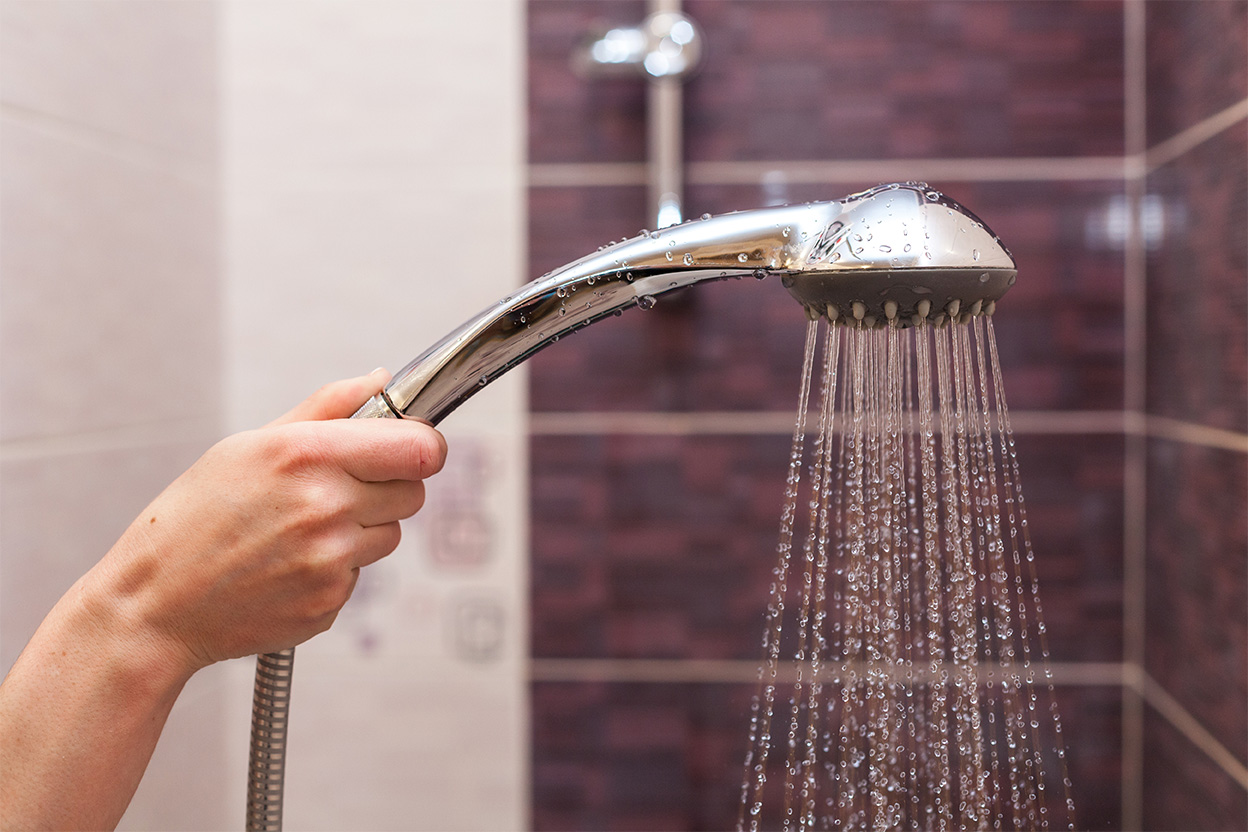Your health and comprehensive information are very important to us so that you can also protect yourself and act appropriately. We have implemented various measures to eliminate Legionella. We are working closely with the health department and specialist companies to achieve this. Below, we have compiled the status of these measures as well as all important questions and answers for you.
Legionellen, Hinweise, Trinkwasser
General procedure for combating Legionella
FAQ Legionella contamination
General
What are Legionella bacteria and how do they reproduce?
Legionella bacteria are bacteria that multiply in warm, stagnant water. There is a risk of infection when water containing Legionella is finely atomized/nebulized and the vapor is then inhaled. This can happen when showering or when using humidifiers or inhalers.
The causes of Legionella can be diverse, which is why a comprehensive analysis is necessary. Possible causes include stagnant water, excessively low hot water temperatures, structural conditions, or infrequent use of the faucet.
What can I do as a tenant to prevent the formation of Legionella?
Legionella bacteria thrive in stagnant water. Therefore, please use all taps regularly, at least every three days—even in rarely used rooms such as guest bathrooms.
If you are away for a longer period of time, please note the following: Make sure that the water flows regularly (e.g. through friends or neighbors) or close the main shut-off valve.
After an extended absence, please let the water run on all faucets for at least two minutes with the windows open. Only then should you use the water.
Limescale deposits and corrosion particles promote the growth of microorganisms. Therefore, shower heads, hoses, and aerators should be descaled regularly (e.g., with diluted vinegar).
What happens during and after a Legionella test?
You can find the exact process here .
Health aspects
How do I recognize health symptoms of an infection?
In rare cases, an infection caused by Legionella can occur. Typical symptoms include fever, cough, chills, shortness of breath, or flu-like symptoms. If you suspect this, please seek medical help and mention contact with potentially contaminated water.
Can I drink the water?
Yes, you can drink tap water. Legionella is only dangerous if you inhale steam or spray. Drinking it is safe.
Can I still wash my hands, brush my teeth and bathe?
The ban only applies to showering. Washing hands, bathing, and brushing teeth are all safe. However, be careful not to create hot steam or fine spray when bathing.
I am not allowed to shower – can I shower with the filter I was given?
Yes. If you use the special filter we provide, you can shower again. The filter prevents the release of Legionella bacteria. Please use it exactly according to the instructions provided.
If you haven't received a filter yet, the shower ban still applies to you. Please contact the responsible caretaker to obtain one.
I already showered before the shower ban – should I be worried?
Showering once is usually unproblematic. If you experience persistent discomfort or symptoms, you should seek medical advice as a precaution.
Can I use my washing machine and dishwasher?
Yes, these devices can be used as usual, as no steam is generated during operation. Please be careful when opening the devices, as this may generate steam, and open the window.
Can I boil the water and then use it?
Yes, boiling kills Legionella bacteria. Boiled water can be used for personal hygiene.
What do I need to consider if I have a baby or toddler at home?
If Legionella is present, avoid contact with steam or spray. Use boiled or bottled water for preparing baby food and personal hygiene.
What do I need to consider when using an inhaler?
If you use an inhaler, only use it with boiled or bottled water.
Organizational matters & processes
How is Legionella infection detected?
The Drinking Water Ordinance requires landlords to conduct regular inspections. HOWOGE naturally complies with this obligation.
If a limit value is exceeded, the landlord is obligated to implement countermeasures and coordinate these with the responsible health authority. A shower ban is a legally required protective measure.
After a Legionella infestation, control samples and further regular tests are carried out to ensure long-term safety.
You can find the exact process here .
How will I be informed about a Legionella infection and its current progress?
You will receive the information promptly via a notice board in the building and by personal letter. You can find general information on our website.
We will also inform you further via a notice in the building or by personal letter.
You can find the exact process here .
Who bears the costs for the measures to be implemented?
The costs for repair work will be borne by HOWOGE.
Who should I contact if I have any questions?
If you have any questions, please feel free to contact us using the usual contact methods. If alternative contact methods apply, we will specifically state them in our correspondence.
